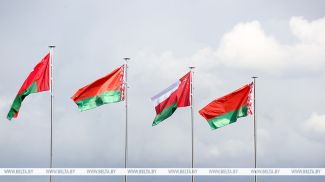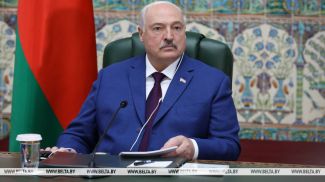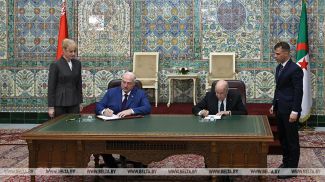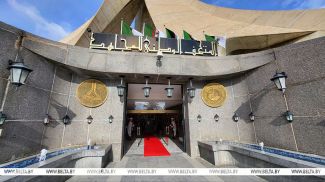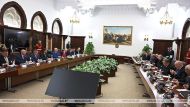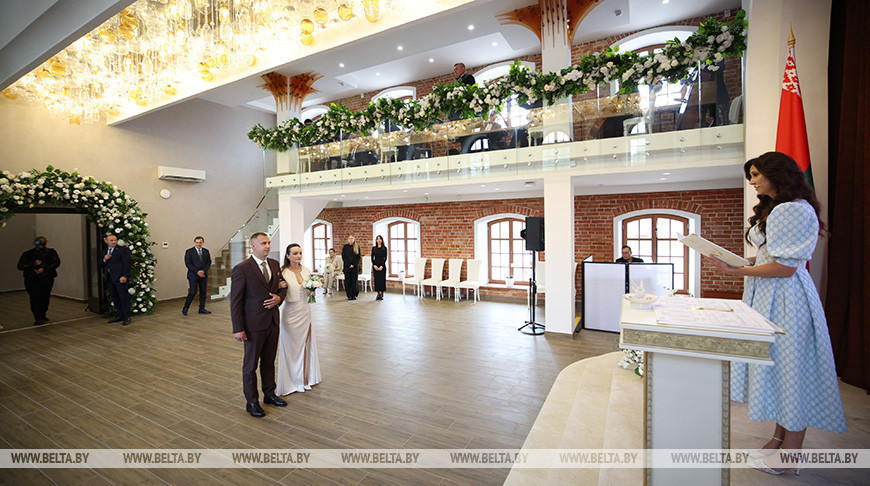
MINSK, 12 September (BelTA) - Belarusian President Aleksandr Lukashenko attended a wedding ceremony and congratulated the newlyweds as he visited the reconstructed Loshitsa complex in Minsk on 12 September. The complex includes a hall for such ceremonies.
First, Aleksandr Lukashenko toured the multifunctional complex. At the entrance, the head of state was met by a historical character, the Guardian of National Traditions, who read out the text of a charter: “A charter confirming the good intentions for the continuity and preservation of the cultural heritage of the capital city of Minsk. Every day, significant events in the lives of the capital's residents will take place in this building, and the traditions of celebrating Belarusian weddings will be preserved and multiplied.”
The Guardian placed the charter on a stand, after which the head of state sealed the charter with a wax seal.
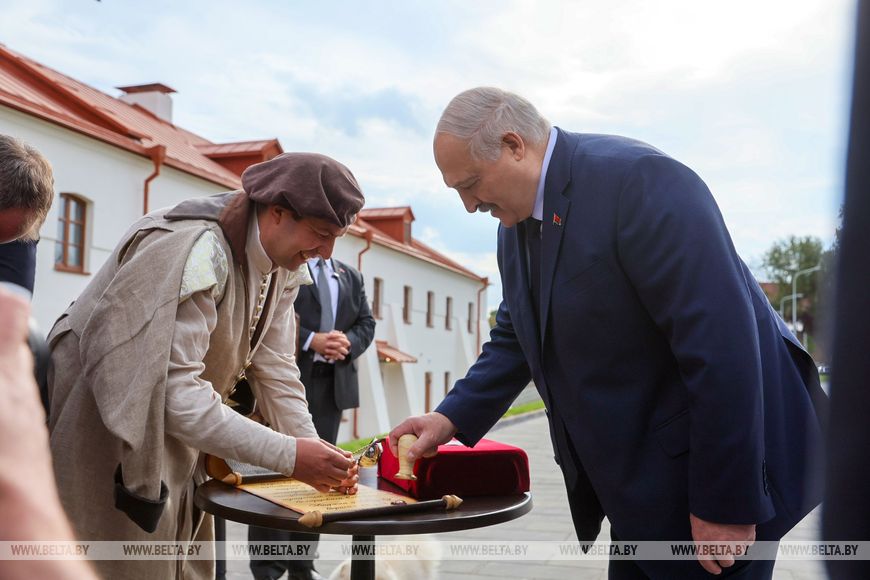
Aleksandr Lukashenko visited the hall for ceremonial events. A wedding ceremony was just taking place there.
After the newlyweds were declared husband and wife, the head of state congratulated them, presented a bouquet of flowers, and handed over keys to rental housing.
The newlyweds are named Dmitry and Polina. The president wished that their marriage be strong and long, but most importantly, to stay healthy and have healthy children.
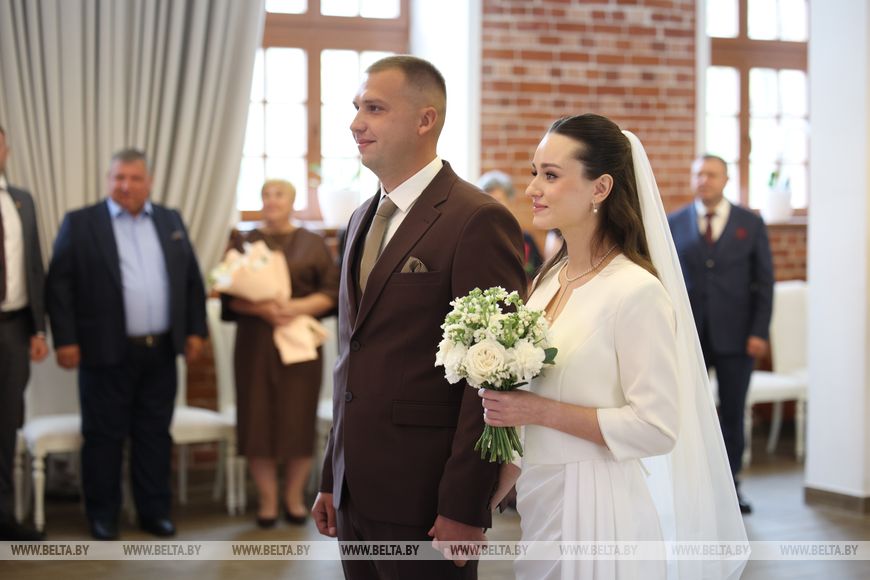
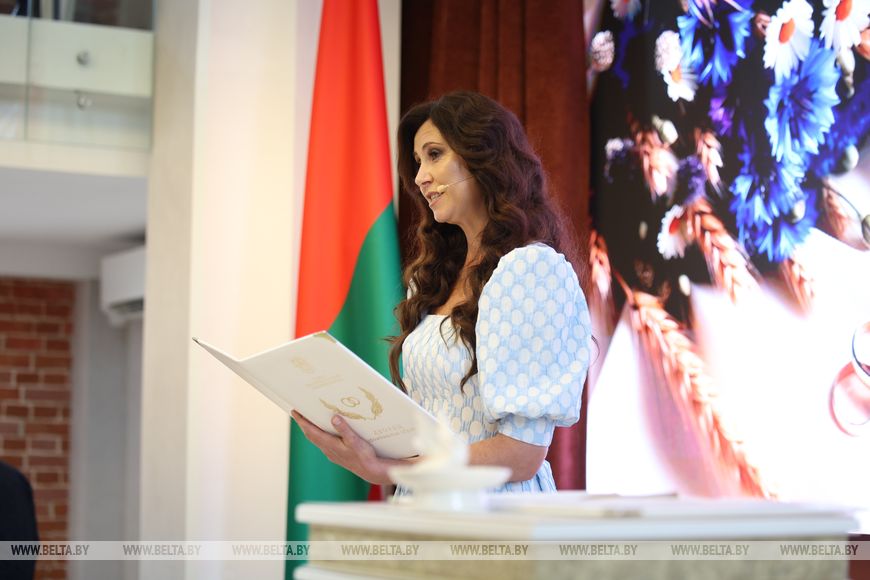
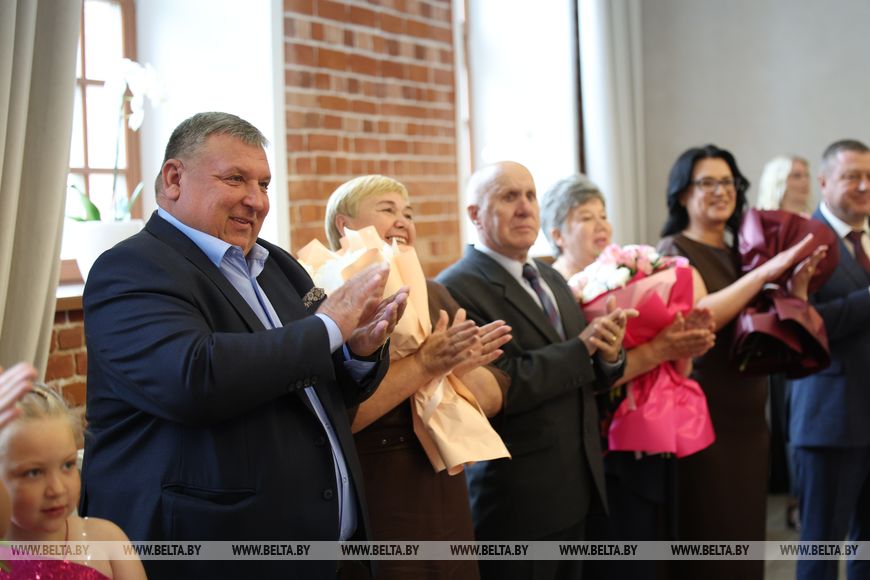
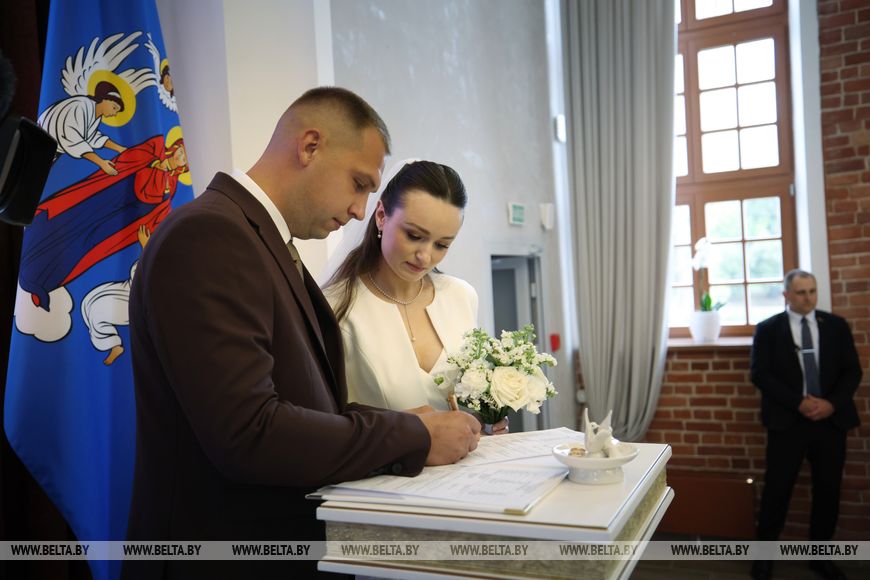
The president wished all the best, happiness, and success to the parents of the newlyweds: “Don't worry, they will give you plenty of work to do. Let there be plenty of work! Three! We need every family to have three children.”
“We will be doing our best,” the groom replied.
As for the rental apartment, it is located in Smolevichi. “The apartment is a hint. It is in Smolevichi. It is an encouragement for you to live there. You can come to work [in Minsk]. That is the idea. We need to avoid overcrowding Minsk,” the head of state said.
The reconstructed complex is a unique facility for the Belarusian capital. It includes a multifunctional building, a hotel with a banquet hall, and a cafe. The concept of the complex's interiors is based on national material and spiritual values and conveys its historical functional purpose.
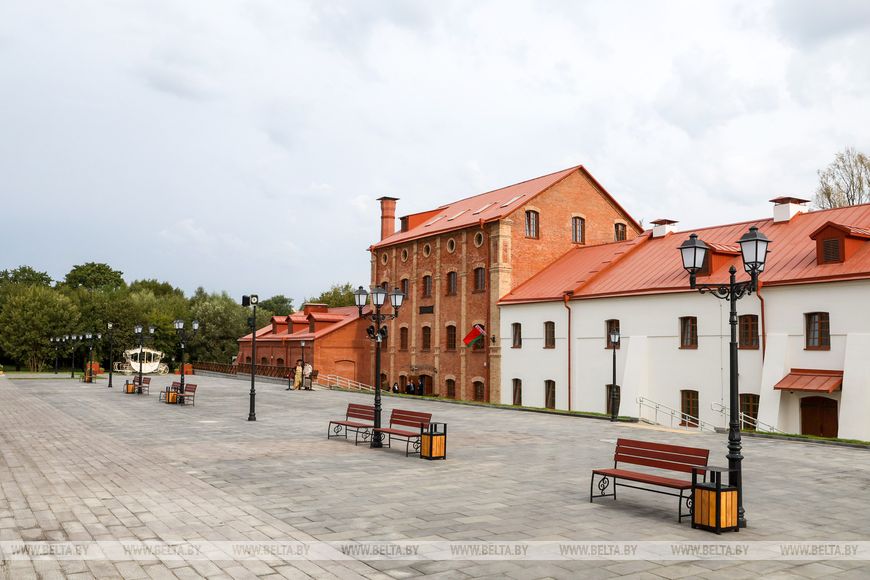
Inside the complex, there is a square for holding cultural, sporting, and trade show events. There is also a special place for outdoor wedding registration ceremonies. The grounds feature a pier on the water surface to enhance the attractiveness of the recreation area.
Originally, a complex of buildings of a distillery and spirits plant was located here, which was part of the Loshitsa estate. The first mention of it dates back to the mid-18th century. From the beginning of the 19th century, the buildings of the distillery workshop were rebuilt and expanded, and in 1890-1895 they acquired the architectural appearance that has been preserved to the present day. After the October Revolution, the building's function changed - it housed a school of fruit growing and horticulture, as well as administrative and residential premises. In 1946, wine production was restored and operated until 1980. The buildings were in a state of conservation until the start of the reconstruction. They are included in the State List of Historical and Cultural Values of Belarus.
First, Aleksandr Lukashenko toured the multifunctional complex. At the entrance, the head of state was met by a historical character, the Guardian of National Traditions, who read out the text of a charter: “A charter confirming the good intentions for the continuity and preservation of the cultural heritage of the capital city of Minsk. Every day, significant events in the lives of the capital's residents will take place in this building, and the traditions of celebrating Belarusian weddings will be preserved and multiplied.”
The Guardian placed the charter on a stand, after which the head of state sealed the charter with a wax seal.

Aleksandr Lukashenko visited the hall for ceremonial events. A wedding ceremony was just taking place there.
After the newlyweds were declared husband and wife, the head of state congratulated them, presented a bouquet of flowers, and handed over keys to rental housing.
The newlyweds are named Dmitry and Polina. The president wished that their marriage be strong and long, but most importantly, to stay healthy and have healthy children.




“It may sound banal to wish happiness and all the best. The main thing is that your children are healthy. If the children are healthy, you will be in a good mood, and you will be happy with the work you do. When children get sick, it is a true disaster. I wish health to your children. Well, you stay healthy, too,” the president said.
The president wished all the best, happiness, and success to the parents of the newlyweds: “Don't worry, they will give you plenty of work to do. Let there be plenty of work! Three! We need every family to have three children.”
“We will be doing our best,” the groom replied.
As for the rental apartment, it is located in Smolevichi. “The apartment is a hint. It is in Smolevichi. It is an encouragement for you to live there. You can come to work [in Minsk]. That is the idea. We need to avoid overcrowding Minsk,” the head of state said.
The reconstructed complex is a unique facility for the Belarusian capital. It includes a multifunctional building, a hotel with a banquet hall, and a cafe. The concept of the complex's interiors is based on national material and spiritual values and conveys its historical functional purpose.

Inside the complex, there is a square for holding cultural, sporting, and trade show events. There is also a special place for outdoor wedding registration ceremonies. The grounds feature a pier on the water surface to enhance the attractiveness of the recreation area.
Originally, a complex of buildings of a distillery and spirits plant was located here, which was part of the Loshitsa estate. The first mention of it dates back to the mid-18th century. From the beginning of the 19th century, the buildings of the distillery workshop were rebuilt and expanded, and in 1890-1895 they acquired the architectural appearance that has been preserved to the present day. After the October Revolution, the building's function changed - it housed a school of fruit growing and horticulture, as well as administrative and residential premises. In 1946, wine production was restored and operated until 1980. The buildings were in a state of conservation until the start of the reconstruction. They are included in the State List of Historical and Cultural Values of Belarus.




